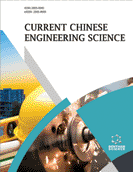Abstract
Tropheryma whipplei causes severe malady termed as Whipple’s disease, a multisystemic lethal problem and we still require modified best regimens. To treat it successfully, 3 medications were distinguished in this investigation by using in-silico methods. 2-amino7fluoro5oxo5Hchromeno[2,3b]pyridine3carboxamide(2APC), Nicotinamide mononucleotide (NMN), and Riboflavin Monophosphate (RFMP) were seen as putative medications. 2APC and NMN restrain DNA Ligase catalytic activity for Tropheryma whipplei and compelling in impeding genomic copying and repairing mechanisms, RFMP shows the inhibitory impact on Chorismate synthase that drives hindrance in metabolic biosynthesis of amino acids. Our investigation used modern advanced in-silico assemblies. BLAST, CDART, CD-HIT were utilized to choose target catalytic biomolecules of a bacterium. Phyre2, dependent on HMM calculation, was applied to discover the best auxiliary models of chosen biocatalysts. AutoDock- Vina assembly was utilized for molecular docking and scoring restricting energies of these medications with catalytic proteins of the bacterium. 2 APC and NMN hindering DNA Ligase show - 8.3 and - 8.2 kcal/mol individually while RFMP represses Chorismate synthase - 7.3 kcal/mol binding energy. Sub-atomic re-enactment or simulative mechanistic analysis gives further approval to concluding 2APC as impeccable inhibitory medication having remedial activity against T. whipplei. This escalated and novel examination is simple, quick, and valuable in anticipating drugs by incorporating computational insights in medicinal sciences.
Keywords: Biomolecules, Computational approach, Drug Discovery, Molecular dynamics Simulation, Tropheryma whipplei.






















